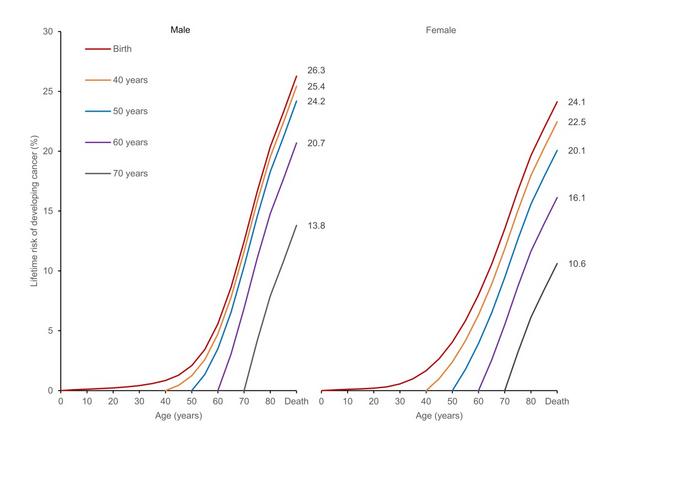This study is led by Prof. Freddie Bray (International Agency for Research on Cancer) and Prof. Wenqiang Wei (National Cancer Center/National Clinical Research Center for Cancer/Cancer Hospital, Chinese Academy of Medical Sciences and Peking Union Medical College).
The lifetime risk of cancer is a measure of the cumulative impact of cancer across a defined age span, and has obvious intuitive appeal. There are however few examples in comparative assessments of cancer-specific risk across populations. Therefore, the author of this study aimed to estimate the lifetime risk of cancer at the global, world region and national level for 36 major cancer types. Data from GLOBOCAN for 185 countries/regions for the year 2020 were obtained, alongside all-cause mortality and population data from the United Nations to estimate the lifetime risk of cancer using the “adjusted for multiple primaries (AMP)” method which accounts for the competing risk of death from causes other than cancer.
The estimated global lifetime risk of cancer from birth to death was 25.10% (95% CI: 25.08%–25.11%) in 2020; the risk among men was 26.27% (95% CI: 26.24%–26.30%) in men and 23.96% (95% CI: 23.93%–23.98%) in women. There were marked differences in risks between countries within world regions and by the level of human development. In very high Human Development Index (HDI), high HDI, medium HDI, and low HDI countries/regions, the lifetime risk of cancer was 38.48%, 25.38%, 11.36%, and 10.34%, respectively. Worldwide, prostate cancer and breast cancer were associated with the greatest lifetime risks among men and women, of 4.65% and 5.90% respectively. The lifetime risk of cancer decreased with age, with a remaining risk of 12.61% (95% CI: 12.60%–12.63%) from the age of 70 years.
This study presents a comprehensive quantification of lifetime risks of developing cancer globally and the identified age-specific variations in cancer risk at the population level, which can provide important information for global health systems planning as well as targeted cancer control interventions in different countries or regions.
Journal
Science Bulletin
DOI
10.1016/j.scib.2023.09.041

















